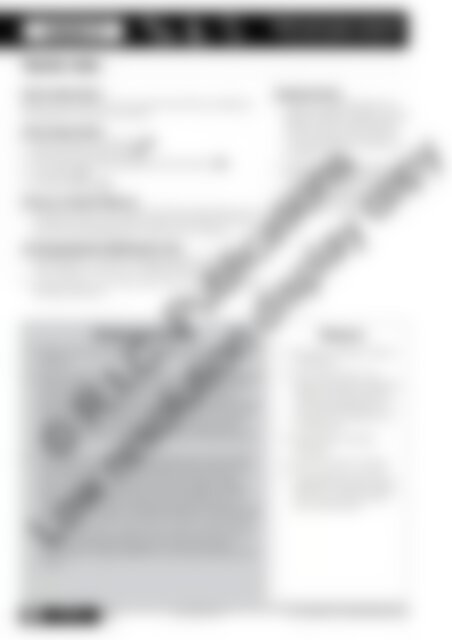6172RB Science a STEM approach Year 2 low res watermark
Create successful ePaper yourself
Turn your PDF publications into a flip-book with our unique Google optimized e-Paper software.
Lesson 2<br />
Earth and space sciences<br />
OUR RESOURCEFUL WORLD<br />
Teacher notes<br />
<strong>Science</strong> inquiry focus:<br />
What natural <strong>res</strong>ources do we use for food? How do different<br />
foods get from a farm to our fork?<br />
<strong>Science</strong> Inquiry Skills:<br />
• Questioning and predicting QP<br />
• Planning and conducting PC<br />
• Processing and analysing data and information PA<br />
• Evaluating E<br />
• Communicating C<br />
<strong>Science</strong> as a Human Endeavour:<br />
• Students observe, ask questions about and describe how we<br />
use Earth’s <strong>res</strong>ources, such as plants and animals, for food,<br />
and how this food gets from a source to our homes.<br />
Technology/Engineering/Mathematics links:<br />
• participating in an online interactive game to identify the<br />
main stages in production of different food products<br />
• using an iPad® to scan QR codes which link to online videos<br />
of food production<br />
Background information<br />
• Earth’s <strong>res</strong>ources used in food production are plants and<br />
animals.<br />
• Plants provide us with different fruits, vegetables, legumes,<br />
grains, seeds and oils. Different parts of a plant provide<br />
us with different foods such as carrots (roots), celery<br />
(stem/trunk), lettuce (leaves), apples (fruit), sesame (seeds<br />
and oil) and wheat (grain). Nuts can also be a source of<br />
milk, such as almond milk. Some food products come<br />
from multiple parts of the plant, such as mushrooms and<br />
broccoli.<br />
• Animals provide us with different types of red and white<br />
meat, dairy products, eggs and honey. Red meat comes<br />
from farmed animals such as beef cows, pigs, sheep,<br />
goats, deer and wild animals, such as kangaroos. White<br />
meat comes from fish and poultry. Dairy products are<br />
made from milk, which can be sourced from many animals.<br />
In Australia, we often use milk from dairy cows and goats.<br />
• For food production, plants and animals are often grown<br />
on farms, extracted through various processes and<br />
transported to supermarkets for us to buy and take home<br />
to use.<br />
Assessment focus:<br />
• Use each group’s A3 piece of<br />
paper to assess students’ inquiry<br />
skills and their understanding<br />
of the production process for<br />
a given food, from its source to<br />
our home.<br />
• Assess students’ understanding<br />
of Earth’s <strong>res</strong>ources that provide<br />
us with food and how these are<br />
grown and transferred from a<br />
source to our homes for us to<br />
use.<br />
Resources<br />
• One pad of sticky notes for<br />
each group<br />
• One copy of each mini<br />
poster outlined on page 84.<br />
These will need to be cut<br />
out and laminated prior to<br />
the lesson for display on a<br />
concept wall<br />
• Eight iPads® with QR<br />
scanners<br />
• Eight A3 pieces of paper<br />
• One copy of the cards on<br />
page 85. These will need to<br />
be cut out and laminated<br />
prior to the lesson<br />
© R.I.C. Publications<br />
Low <strong>res</strong>olution display copy<br />
82 <strong>Science</strong>:<br />
A <strong>STEM</strong> APPROACH<br />
YEAR<br />
2<br />
978-1-925431-95-7 R.I.C. Publications® – www.ricpublications.com.au


















